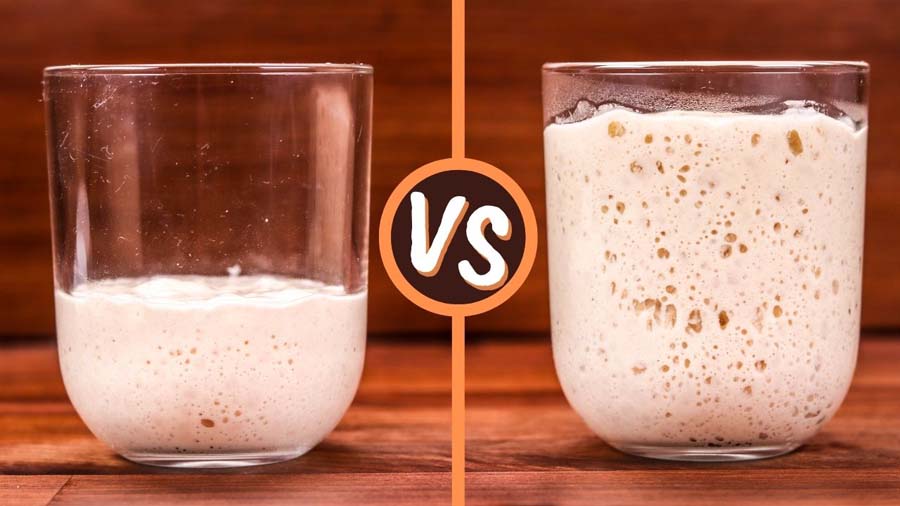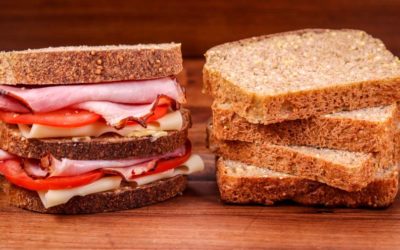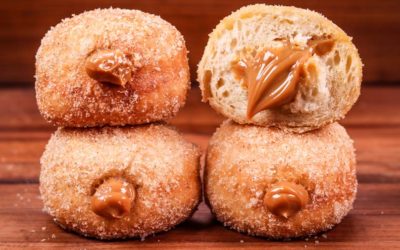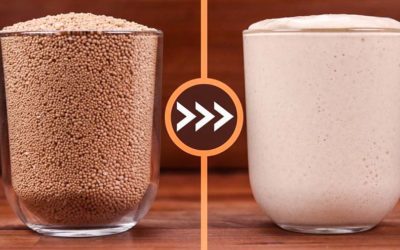Levain, leaven, sourdough starter. They can be the same thing, but not always.
Levain is a noun in the French language. By definition a ‘sourdough culture’.
Leaven is an English word. It can be a noun meaning the same as above. It can also be used as a verb defining the action of fermentation. ‘I named my leaven Flint’; ‘I use Flint to leaven my bread dough’.
What is the difference between a starter and a leaven?
A starter and a leaven essentially do the same thing. You add them to a bread dough, and they make it ferment and rise. You can just keep a starter, feed it regularly or refrigerate and refresh it occasionally, and build it before you want to use it in a recipe.
The starter is fed, left to become active and bubbly and then added to a bread dough. A little bit is left behind for perpetuating the culture. I know quite a few bakers who do it this way.
Other bakers including myself like to keep a starter which they feed regularly or refrigerate and refresh it occasionally, but when they want to make bread, they take some of the starter and mix it in a separate container with fresh water and flour to build a leaven. Unlike the other method all the leaven is used in the recipe. There is no need to leave any behind since the starter is in a separate container.
In both cases the starter must be continuously fed and kept in good condition.
So why waste time and build a leaven separately?
It is more work to build a leaven separately and you got double the washing up to do afterwards. But there are a couple of good reasons to do it this way.
To have a happy starter that is always active and predictable it should be kept in the same condition because that is what it is used to.
Different bread formulas require preferments with different hydration levels and different kinds of flour. If you are making several different breads in a row, then your starter could go through many changes during a short time.
I keep my starter at a hydration of 100% and I only feed it with white bread flour. If I start changing the flour and water percentage, then it will ferment differently every time.
If for example you would make a rye bread, then you would need to convert your starter to a rye starter. And then if the next day you wanted to make cinnamon buns, then they would contain rye flour.
Perhaps that is why I sometimes hear that people keep several starters at the same time. Is it that they use the starter as a leaven like I described above and because they like to bake different breads, they must have a separate starter for each kind of bread?
Let me know if you have more than one starter and tell me why because I am curious now. So far, I have only ever needed one from which I can make a leaven to fit any recipe and it has always worked.
Watch the video here



